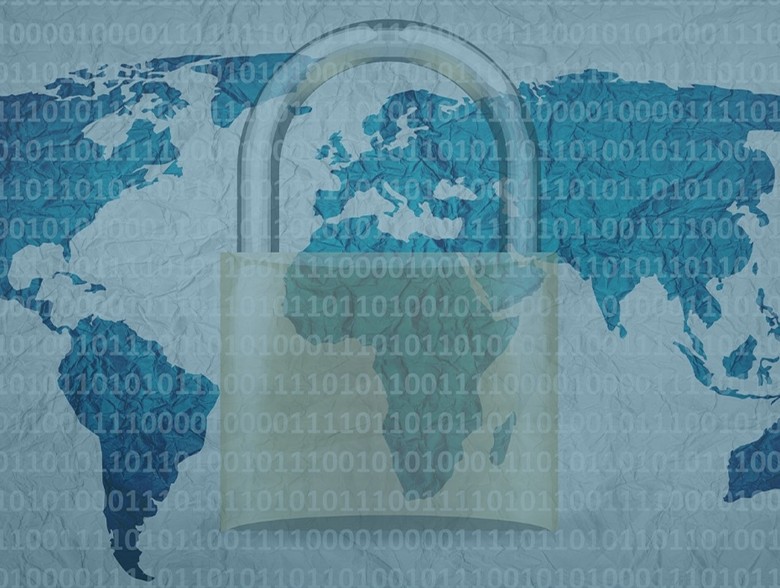By Sananda Dasgupta, Tech Industry and Cybersecurity Writer at Coloco
Businesses are becoming increasingly reliant on third-party services for their various operations. In today’s interconnected business landscape, it is practically impossible for any business to survive without collaborating with third-party vendors, suppliers, partners, contractors, and service providers. When this collaboration happens in a digital space, it adds up to the existing cyber security threats.
These third-party entities regularly interact with your IT infrastructure and may have access to your confidential data and privileged information. It increases the attack surface for the hackers who can use the vulnerabilities in that third-party system to steal your information or launch an online attack.
Third-party Cyber Security Risk Management- Why it is Important?
Third-party cyber security risk is becoming a pressing concern for businesses of all sizes and industries. Data suggests organizations worldwide use an average of 110 software-as-a-service (SaaS) applications, and the number is ever-increasing.
Now think that each of these SaaS vendors offers services to hundreds or even thousands of clients. In software supply chain attacks, hackers inject malicious code into an application to infect all users.
Technology research and consulting firm Gartner predicts that by the year 2025, at least 45% of organizations worldwide will be impacted by supply chain attacks.
Companies on the receiving end of such attacks lose millions of dollars for incidents that are outside of their direct control. Moreover, each incident of data breach severely impacts the organization’s reputation. According to the data collected by the National Cybersecurity Alliance, up to 60% of small businesses go out of business and file for bankruptcy within 6 months of suffering from a data breach or other cybersecurity incidents.
Thus, in this environment of the growing threat of third-party cyber security risk, companies must have a well-planned strategy to mitigate the risk.
Third-party Cyber Security Risk Management- 5 Best Practices
Effective third-party cyber security risk management strategy involves assessing the potential risks associated with each third-party relationship, implementing appropriate controls and safeguards, and continuously monitoring for potential vulnerabilities and threats.
Here are 5 best practices that your organization should adopt to minimize potential security vulnerabilities and threats that arise from the use of third-party vendors, suppliers, or partners who have access to your business’s systems, data, or network.
Assess the security measures implemented by your vendors
The recent Gartner report suggests that over 80% of businesses could identify third-party risk only after initial onboarding and due diligence. It shows that the traditional assessment method fails to detect new and evolving cyber security threats. You must update your due diligence process in order to identify all the risk factors.
Before entering into a contract with a vendor, service provider, or any other third-party entity, make sure you are thoroughly updated on their security protocols. If there is a lack of transparency in their security policy document, ask pertinent questions to ensure you know what security measures they implement to protect the system. Assess the vendor’s security testing to confirm the company has effective detection and response plan. Also, enquire about the past cyber security incidents experienced by the vendor and how those incidents impacted their clients.
Establish clear security requirements in contract
The security requirements of a company depend on the risk tolerance level. It is important to communicate to your vendor about your security expectations. Establish clear security requirements for all third-party vendors, including data security and privacy standards, incident response protocols, and monitoring and reporting obligations. Include these requirements in all vendor contracts and agreements and conduct regular audits to ensure compliance.
The security requirements should specify the type of data the third-party vendor will have access to and outline the measures that the vendor should take to safeguard the data. If the third-party vendor handles personal data or sensitive information, the security requirements should also cover privacy requirements. These requirements might include compliance with relevant data protection laws, such as GDPR or CCPA, and implementing appropriate privacy controls to protect sensitive information.
Also, specify the procedures that the third-party vendor needs to follow on the occasion of a security breach. This includes notification protocols, mitigation measures, and steps to contain and resolve the incident. Your contract document should also outline the monitoring and reporting obligations that the third-party vendor must follow. These might include regular security audits, reporting security incidents or breaches, and regular communication with the business regarding the vendor’s security practices.
Keep yourself up to date on your vendors list
Organizations often lose track of the services they use and the data the vendors have access to. It can be disastrous for your third-party cyber security risk management strategy.
Maintain an accurate vendor list and regularly review their access to data to limit the exposure of sensitive data to only those who need it. It will reduce the risk of data breaches or leaks and limit unauthorized access or misuse of sensitive data.
Moreover, you will have more control over your system when you have clear knowledge about your vendors and their access to data. For example, if a third-party vendor has access to highly sensitive data, you can implement additional security controls or ask the vendor to deploy a more stringent security protocol for that particular set of data.
An updated vendor list will also help you respond quickly if a security incident occurs. When you know who all have access to the data, you can immediately identify the relevant vendor and take appropriate measures.
Implement continuous monitoring and limit access
Continuous network monitoring is critical for identifying and addressing potential cybersecurity risks in real time. Continuously monitor your network traffic to spot any irregularities. It will help you quickly recover if an incident of cyber-attack through a third-party system occurs.
Your team should also continuously monitor the vendors for security risks. The monitoring should include regular security audits, penetration testing, vulnerability scanning, and ongoing risk assessment. It will help you evaluate the effectiveness of third-party vendors’ security practices and detect any vulnerabilities and weaknesses in their systems and applications. You can consider hiring third-party auditors to use their expertise.
Also, consider implementing robust role-based access control. Make sure the only vendors with access rights need it to do their job. Depending on the nature of their service, vendors may need to access data or systems only for a limited period of time. Make sure their access rights are withdrawn once the job is done.
Have a response plan
No amount of security precautions can make your system 100% immune to cyber security threats. Cybercriminals are coming up with more sophisticated methods to penetrate the system. This means that despite the best effort of your third-party vendors and partners, cyber security incidents may still occur. You should have a detailed response plan in place that outlines the steps to take in the event of a security breach involving a third-party vendor.
An incident of security breach can be messy, and it can confuse your employees as well as the vendors. Make sure all your employees know their roles when such incidents happen. Your response plan should include procedures for notifying affected parties, mitigating the impact of the breach, and conducting an investigation into the cause of the breach.
Takeaway
In today’s complex business ecosystem, businesses need to take proactive steps to manage and mitigate cyber security threats by implementing an effective third-party cyber security risk management strategy. The steps mentioned here will help create a secure environment for businesses to run their operation and minimize security vulnerabilities and threats that arise from third-party vendors, suppliers, or partners. By following these best practices, companies can improve their cyber security and productivity and can quickly recover even if a security breach incident occurs.
About the Author
 Sananda is a writer at Coloco where she writes on tech industry and cyber security. She works as an independent writer and works with diverse range of clients. Her writings are regularly published on various online blogs and magazines. Sananda can be reached online at [email protected] or https://www.linkedin.com/in/sananda-dasgupta.
Sananda is a writer at Coloco where she writes on tech industry and cyber security. She works as an independent writer and works with diverse range of clients. Her writings are regularly published on various online blogs and magazines. Sananda can be reached online at [email protected] or https://www.linkedin.com/in/sananda-dasgupta.


